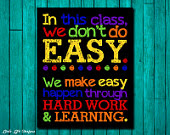Micro-credentials are a growing trend in professional development (PD), and they can be found across various teaching and learning contexts. These credentials are personalized, accessible, shareable, and “stackable” (allowing you to progress on a career path), and they are often rooted in various teaching- and learning-based competencies.
This blog post explores the micro-credential experience, the gamification of PD, free micro-credential opportunities related to English language teaching, and a potential plan to start integrating micro-credentials in your PD planning.
1. The Micro-Credential Experience and Process
Take a minute and think about the PD that you participate in. Are you an active participant in these different PD opportunities? Are you able to select these PD opportunities, or are they preselected for you? Are you able to group and connect your PD to see growth in a given area? The rise of micro-credentials aims to put the traditional, prescriptive, and passive PD to rest.
Check out this video:
With micro-credentials, educators can search through various credentials related to teaching, including English language teaching. They can choose credentials from a variety of locations and organizations. Some credentials are single experiences while others are offered in a stack. Educators can decide how much they want to focus on a given area and complete multiple tasks to earn multiple badges related to that topic.
The algorithm for micro-credentials varies from more traditional forms of PD. Instead of sitting and listening to a lecture and getting a stamped certificate, participants have a say in the credentials they want to acquire and the tasks that they complete to demonstrate proficiency. Then, they collect various badges related to a variety of micro-credentials topics.
The algorithm is simple:
Micro-credentials = find credentials of interest + complete and submit task
+ receive digital badge + display and collect digital badges
2. Gamification of Professional Development
The micro-credential model for PD is similar to online gaming. As in online games, participants complete tasks and acquire a reward or badge. These badges can be used and shared with others. For those who enjoy gaming or the gamification of their own classroom curricula, the micro-credential movement might be the missing link in your PD; they are the beginning of gamified PD. This fundamental change in how PD is viewed could also change the way continued education is viewed along with initial teacher training coursework.
Though the format may be game-like, it does require educators to rethink their role in their PD. Educators now have to think about the building blocks or credentials that they want to stack and acquire. They also need to play an active role in this process by completing tasks and uploading work to show proficiency within a given area. This requires ongoing reflection.
3. Micro-Credentials Related to English Language Teaching
Though there are multiple locations online to find micro-credential opportunities, a leading voice within the micro-credential movement is Digital Promise. This database aims to provide a variety of competency- and research-based PD opportunities to help educators develop their skills. This database shares opportunities from its own offerings and from various universities and organizations (e.g., PBS, the Center for Collaborative Education, National Geographic Society, and various school districts and universities), which makes it easy for educators to find the PD they are looking for. While these are great resources for all educators, there are multiple offerings that are specifically helpful for English language teachers.
Here are nine free micro-credential opportunities for English language teachers that can be found in the Digital Promise Database:
- Supporting English Learners: Constructive Conversations
- Supporting English Learners: Language Fundamentals
- Supporting English Learners: Mathematical Language Routines
- Supporting English Learners: Supporting Argumentation
- Refugee Educators
- Deeper Learning: Social and Cross-Cultural Interactions
- Geographic Thinking
- Language Acquisition Best Practices
- Service Learning
These are only but a few of the micro-credentials connected to English language teaching. As educators determine their PD goals, they are better able to find targeted credentials to pursue. The process requires educators to be active in the selection and completion of credentials in meaningful, accessible, and stackable ways.
4. Micro-Credentials: Creating a PD Plan
With so many micro-credential options available online, educators need to think about how they want to prioritize their selection. Instead of completing required PD and sitting through presentations, they can consider what that they need and want.
Here are a few simple steps to consider when starting your micro-credential planning:
- Review the micro-credential opportunities that are available. You might find a topic that you have not considered before. Think of experiences that are interesting, relevant, and meaningful. Create a list of the top 5–10 credentials or topics that are of interest.
- Divide this list into topics related to personal professional growth and professional learning to implement in the classroom.
- Once this list is divided, prioritize the opportunities listed in each column. With so many possible options to explore, this helps to narrow down the road ahead and provide a few to start with. If you are new to micro-credentials, take some time with a topic and play around.
As you are acquiring these micro-credentials, consider creating a Google Drive or other folder to store (1) information for each credential explored, (2) tasks completed for each competency, and (3) badges earned. From here, you can add this information to professional documents (CV, résumé) and on LinkedIn.
Consider gamifying your PD! If you have experience with micro-credentials, please share in the comments below, and if you don’t have experience but are interested, share your thoughts about giving it a try!
from TESOL Blog http://blog.tesol.org/trends-in-elt-pd-micro-credentials/





